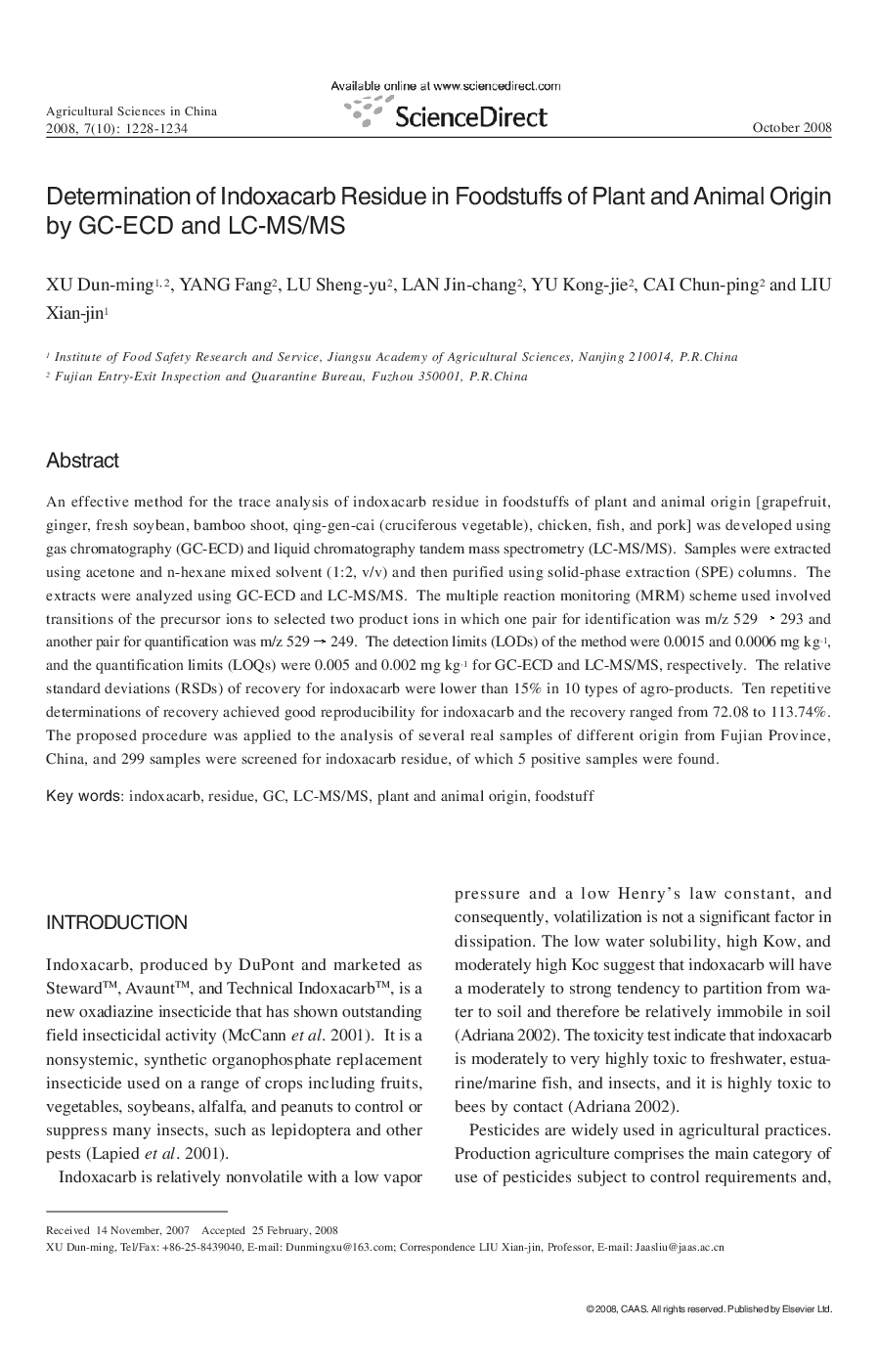| Article ID | Journal | Published Year | Pages | File Type |
|---|---|---|---|---|
| 4490529 | Agricultural Sciences in China | 2008 | 7 Pages |
An effective method for the trace analysis of indoxacarb residue in foodstuffs of plant and animal origin [grapefruit, ginger, fresh soybean, bamboo shoot, qing-gen-cai (cruciferous vegetable), chicken, fish, and pork] was developed using gas chromatography (GC-ECD) and liquid chromatography tandem mass spectrometry (LC-MS/MS). Samples were extracted using acetone and n-hexane mixed solvent (1:2, v/v) and then purified using solid-phase extraction (SPE) columns. The extracts were analyzed using GC-ECD and LC-MS/MS. The multiple reaction monitoring (MRM) scheme used involved transitions of the precursor ions to selected two product ions in which one pair for identification was m/z 529 → 293 and another pair for quantification was m/z 529 → 249. The detection limits (LODs) of the method were 0.0015 and 0.0006 mg kg−1, and the quantification limits (LOQs) were 0.005 and 0.002 mg kg−1 for GC-ECD and LC-MS/MS, respectively. The relative standard deviations (RSDs) of recovery for indoxacarb were lower than 15% in 10 types of agro-products. Ten repetitive determinations of recovery achieved good reproducibility for indoxacarb and the recovery ranged from 72.08 to 113.74%. The proposed procedure was applied to the analysis of several real samples of different origin from Fujian Province, China, and 299 samples were screened for indoxacarb residue, of which 5 positive samples were found.
